We received entrance into the Genghis Khan Exhibit at Discovery Place Science in exchange for this post.
Discovering Genghis Khan
A few months ago, my kids stumbled upon the name Genghis Khan. They might have heard it before, but this time it sparked something more.
A Surprising Discovery
After receiving my results from Genes For Good, we analyzed my genetic makeup. My son pointed to a section on the chart and asked, “What’s the orange?”
His sister read the graph and answered, “Asian.”
My son was taken aback, “Mom is not Asian!”

“That’s my Genghis Khan!” I exclaimed.
“Genghis Khan?” was their puzzled response.
A New Interest
My husband, excited to share his enthusiasm for the Netflix Original series Marco Polo, particularly the scenes featuring Hundred Eyes, sparked their interest. Our dinner conversation quickly shifted to the legendary conqueror. My son was captivated when he learned that Genghis Khan was a world conqueror who led wars that killed nearly 10% of the world’s population at that time—around 40 million people!
They were amazed to discover that many everyday items, such as pants, forks, passports, and paper money, originated with Genghis Khan.
Wars led in his name killed almost 10-percent of the world’s population at the time (some 40-million people)!
The Genghis Khan Exhibit
We discovered that the Genghis Khan Exhibit was being held at Discovery Place Science in Charlotte. It was a fantastic opportunity for the kids to explore the culture, conquests, and heritage of one of history’s greatest conquerors and find out if the legend lived up to its reputation!
As you step into the 13th-century Mongolian empire, you come face-to-face with a prominent monument honoring Mongolia’s revered leader, Genghis Khan. This striking Bronze statue, which stands proudly at the entrance of the Mongolia Parliament building, gazes over the city square, embodying the legacy of this legendary figure.
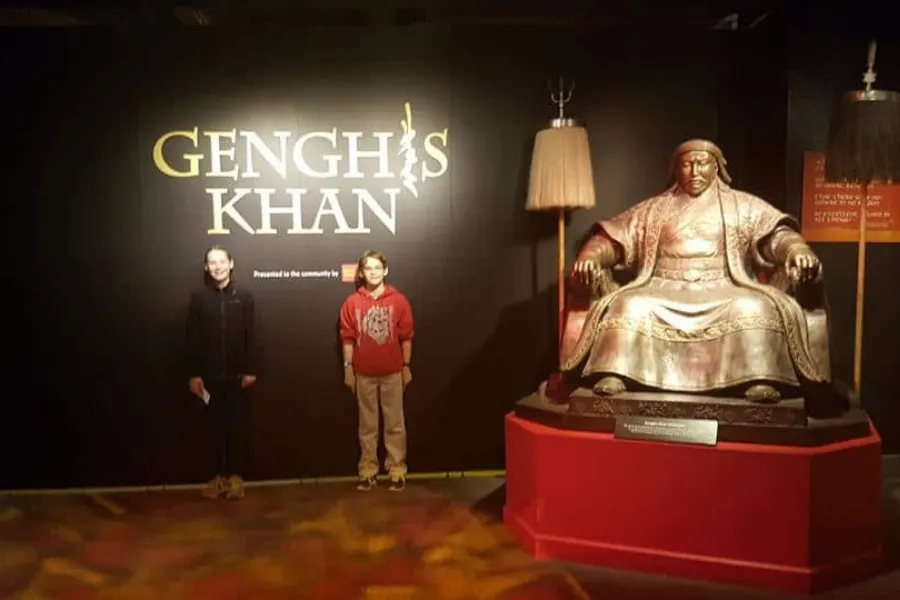
One of the kids’ favorite aspects of the exhibit was the interactive element. Upon receiving our tickets, each child chose a card featuring a character from Genghis Khan’s era. As we explored the exhibit, we found kiosks where we could trace the life paths of these historical figures, revealing their journeys through both triumphs and tragedies.

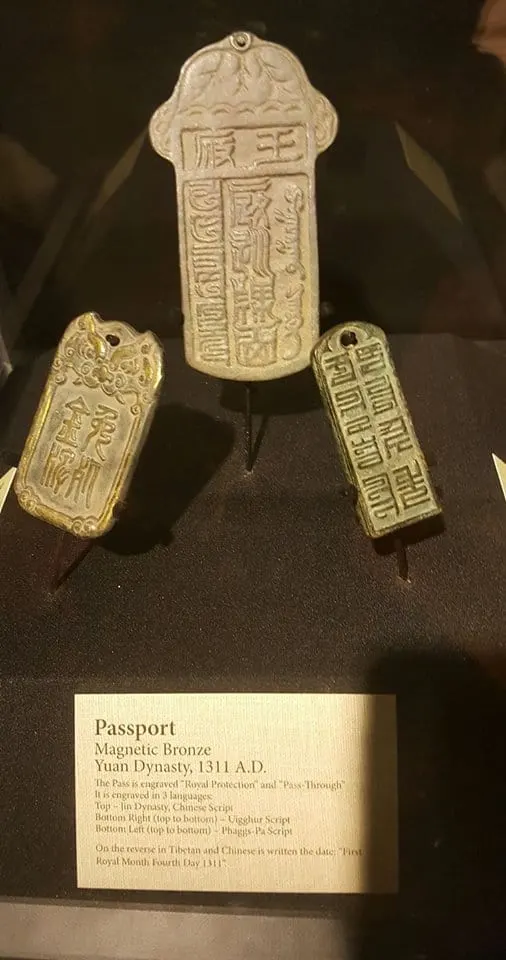
The most striking artifact we encountered was an imperial passport from a Kublai Khan ambassador. One of only two remaining in the world, dating back to around 1240 AD, it boldly declares: “I am the emissary of the Khan. Defy me, and you will die.”

It wasn’t just my kids who were captivated by the exhibit. Two rooms in, I struck up a conversation with a 10-year-old boy. Together, we examined chain mail and various arrowheads, choosing one that we thought could cause the most damage. The boy then excitedly told me that Genghis Khan’s “real sword” was on display at the entrance.
I had to confirm this with my husband. He went back to check and told me, “It’s an Emperor’s sword from around 1290 BC. It’s possible it could be related, as it was refurbished in the 17th century and given to a Chinese Emperor.”
Just think about that—a sword from centuries before being refurbished as our own country was emerging. The craftsmanship was indeed extraordinary, featuring a handle made of leopard turtle shell and authentic gold inlays.
Though I didn’t want to burst my new friend’s bubble, I had to wonder if this was truly Genghis Khan’s sword. Still, I hope he cherishes the moment and continues to believe in the magic of history.
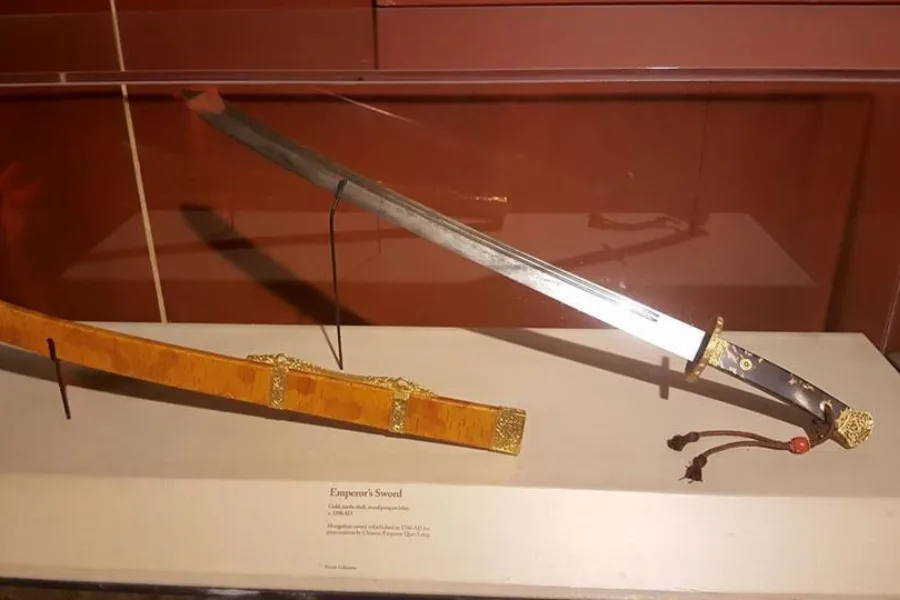
The Genghis Khan Exhibit is thoughtfully organized into distinct rooms, each illustrating a different segment of Genghis Khan’s timeline.
The Grasslands Room: The Beginning of the Journey
Our exploration started in the Grasslands room, where we delved into the daily life of nomads living on the high plateaus of Central Asia. This room provided a window into the world of Genghis Khan’s early influences.
Here, we encountered Temüjin, the young boy who would become Genghis Khan. We learned how his challenging childhood and nomadic lifestyle shaped his future greatness.
At the heart of this room was a replica of a traditional Mongolian ger. This dwelling, central to Mongolian culture, looked incredibly warm and inviting, offering a glimpse into the lives of the people from that era.

As a family that treasures game nights, my children were thrilled to discover that board games date back to 1200 BC. They were particularly fascinated by the ancient version of dominoes.
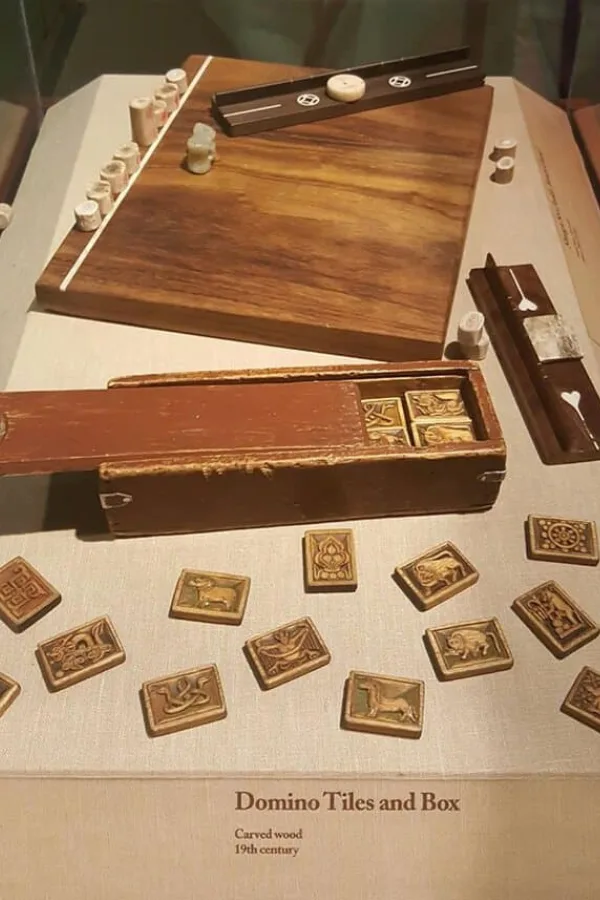
We meandered from the Grasslands Room into the Rise of Mongols Room, where we explored the ascent to leadership. Here, we traced the journey of the young and charismatic Genghis Khan as he united warring Mongol tribes and formed an unparalleled cavalry.
This room was a treasure trove of detailed weaponry, showcasing everything from recurve bows and arrowheads to chainmail, helmets, chairs, and various swords.
The intricacy of the armor was particularly striking. The photo below captures the craftsmanship: each “dot” secures a piece of thick leather, highlighting the remarkable detail and the significant weight that must have been a considerable burden for a soldier.
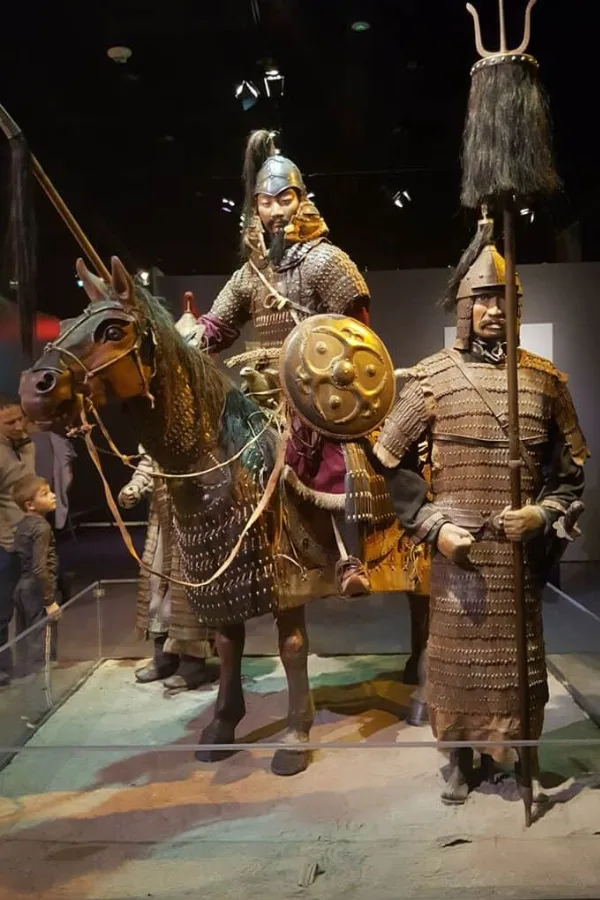
This room illuminated how crucial horsemanship was to Mongol warriors, giving them a decisive advantage over their enemies.
One of the striking displays featured a man holding a black Spirit Banner. Spirit Banners, or sulde, are crafted by tying strands of hair from the finest horses to the shaft of a spear. These banners were placed outside the entrance to a warrior’s resting place, serving as a permanent guardian.
As the strands fluttered in the breeze, they were believed to capture the power of the sky, the wind, and the sun, channeling this natural energy to the warrior. According to legend, the Spirit Banner and its warrior were so closely linked that the banner would carry the warrior’s soul upon death.
Genghis Khan himself had two Spirit Banners: one made from white horses for peacetime and another from black horses for guidance in war. While the white banner vanished early in history, the black banner is said to have survived.
Centuries after Genghis Khan’s death, his legacy continued through his descendants. In the 16th century, Lama Zanabazar built a monastery with the special mission of protecting the black banner. Over a thousand monks from the Yellow Hat sect of Tibetan Buddhism were tasked with guarding this revered relic.

The Genghis Khan Exhibit features two formidable weapons that highlight the scale of his military prowess: a full-scale replica of a trebuchet (catapult) and a giant siege crossbow. These devices of mass destruction were instrumental in breaching city walls and played a crucial role in Genghis Khan’s conquests across China, Russia, and beyond, helping to create the largest contiguous land empire in history.
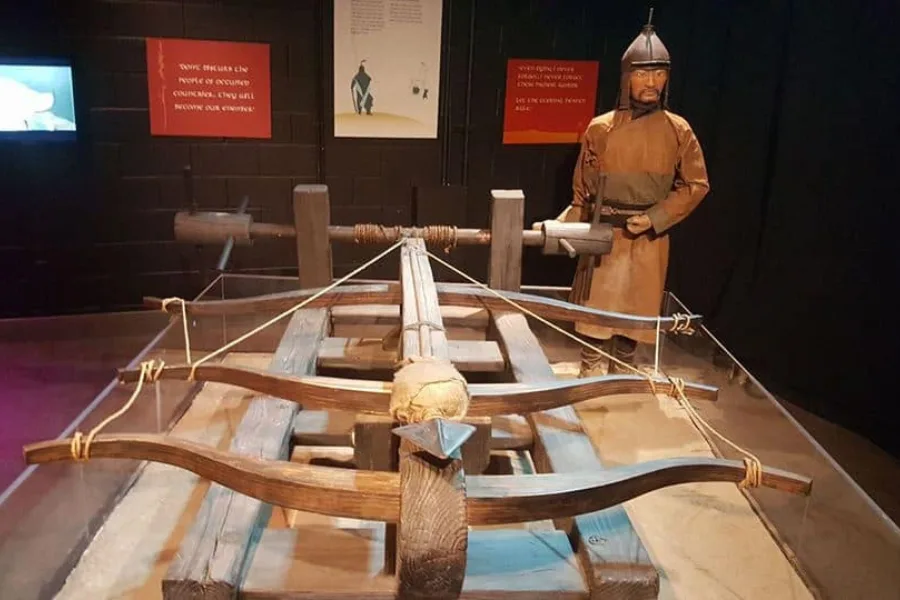
One room in the exhibit delves into the sophisticated methods Genghis Khan used to manage his vast empire. It showcases his many innovations, including an efficient messenger service, a system of laws, the introduction of paper money, and an early example of Mongolian writing.
Perhaps the most captivating part of the exhibit for me was the exploration of Genghis Khan’s death. According to the traditional narrative, he died in 1227 from injuries sustained in a fall from his horse. However, alternative sources suggest other causes, such as malaria, an arrow wound to the knee, or even murder by an angry mother during an attempt to force himself on a Chinese princess.
The mystery surrounding his final resting place adds to the intrigue. Legend has it that his funeral procession left a trail of slaughtered people to obscure the location of his grave and that his followers rode horses over the burial site to further conceal it. There’s even a curious detail involving a pregnant camel in the story, though I won’t spoil the reason here.
Each room in the exhibit is marked with a banner summarizing the experience awaiting visitors. The journey through the Genghis Khan exhibit ultimately leads to the Silk Road—a symbol of his astute statesmanship.

Genghis Khan was a ruthless warrior who, despite his fearsome reputation, managed to lead a sophisticated society characterized by fair taxation, religious freedom, open trade, a stable government, and a deep appreciation for the arts. He also created a universal written language within his empire, further demonstrating his innovative approach to governance.
These elements are among the highlights of the exhibit, which left my family in awe.
Interestingly, scientists estimate that around 16 million people alive today are genetic descendants of Genghis Khan. Thanks to a Genes for Good DNA test and a curious ten-year-old, our family found ourselves connected to Khan’s incredible legacy.
For those interested in coming face-to-face with artifacts from the Mongolian Empire, make sure to visit the Genghis Khan Exhibit before April 30, 2017, and immerse yourself in the legend.
